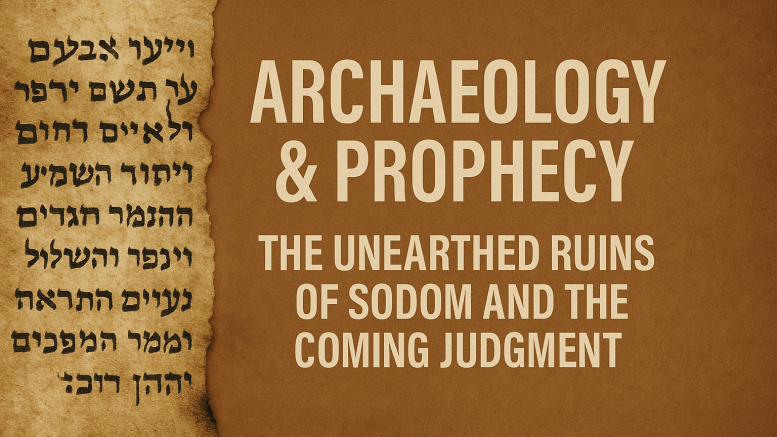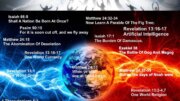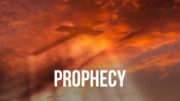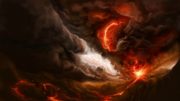Playback speed:
What If the Ashes of Sodom Still Whisper God’s Warning?
For centuries, scholars and skeptics alike have wondered where the infamous cities of Sodom and Gomorrah once stood. According to Scripture, God wiped Sodom and Gomorrah off the face of the earth with fire from heaven (Genesis 19).
Now, a stunning biblical archaeology Sodom discovery near the southeastern shore of the Dead Sea is reigniting that ancient question — offering powerful confirmation that the Bible’s record is both historically and prophetically reliable.
Watch Dr. Mark Hitchcock explain this discovery:
You can explore more of Dr. Hitchcock’s teaching at Marking the End Times on Substack.
Unearthing Sodom and Gomorrah
The search for Sodom and Gomorrah has spanned generations. Guides in Israel once told tourists that these cities were lost forever. But recent archaeological work — especially that of Dr. Titus Kennedy — may have changed that.
By retracing Lot’s flight from Sodom to Zoar (Genesis 19:20–23), researchers located what appears to be the ancient city of Zoar on the southeastern side of the Dead Sea — a key clue narrowing the site of Sodom and Gomorrah to within a single day’s walk.
Ancient sources such as Josephus, Eusebius, and the Madaba mosaic map from A.D. 542 all point to the same region. What archaeologists are finding there now matches the biblical account in astonishing detail.
Physical Evidence of Sudden Judgment
Charred Cities and Sulfur Balls
Excavations reveal massive charred ruins where fires began on rooftops and burned downward — a pattern consistent with fire raining from above.
Clusters of sulfur (“brimstone”) balls, some golf-ball to tennis-ball sized, are embedded in the soil. These highly flammable deposits are unlike any natural fire residue found elsewhere.
Burials Frozen in Time
Human remains discovered in collapsed structures were never buried in tombs, suggesting a sudden catastrophe. Entire skeletons were found intact — reminiscent of Pompeii’s tragic preservation.
Cities Never Rebuilt
Sites such as Bab edh-Dhra and Numeira — sounding strikingly like “Gomorrah” — show extensive destruction and have never been re-inhabited, just as Scripture foretold (Deuteronomy 29:23; Jeremiah 49:18).
The Bible Proves Archaeology
Skeptics often say archaeology proves the Bible, but Dr. Hitchcock reminds us:
“Archaeology doesn’t prove the Bible — the Bible proves archaeology.”
Each discovery supports the reliability of God’s Word. The events in Genesis 18–19 were not an allegory or a myth. They were recorded in history, and their ruins still stand as a silent testimony in the desert sands.
Prophecy, Judgment, and the God Who Warns
Sodom’s destruction is not just an ancient story; it’s a prophetic picture of God’s justice.
“Babylon, the jewel of kingdoms… will be overthrown by God like Sodom and Gomorrah—she shall never be inhabited.”
— Isaiah 13:19–20
When God judged Sodom, He displayed both holiness and mercy — holiness in punishing sin, and mercy in rescuing Lot. The same God who fulfilled His warnings then will fulfill every prophecy yet to come.
The Hope Beyond the Ashes
The blackened ruins near the Dead Sea are not just reminders of judgment — they point to grace.
Dr. Hitchcock reminds us that God’s justice and mercy meet at the Cross.
“Jesus Christ bore our judgment when He died there on the cross. Through Him we can have life, forgiveness, and eternal hope.”
Just as surely as Sodom fell, Christ’s promises stand firm:
“Whoever believes in Him shall not perish but have everlasting life.” — John 3:16
The stones cry out — not only of destruction, but of redemption. The same God who judged sin offers salvation through His Son.
Related Scriptures
Genesis 18–19 • Deuteronomy 34:3 • Isaiah 13:19 • Jeremiah 49:18 • Revelation 7 & 14 • Ezekiel 38
Closing Thought
Archaeology affirms it. Prophecy confirms it. The Gospel completes it.
The God who judged Sodom is the same God who sent His Son to rescue us — and the evidence still speaks from the sands of the Dead Sea.





